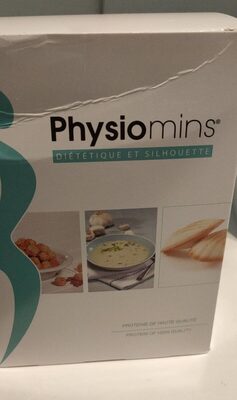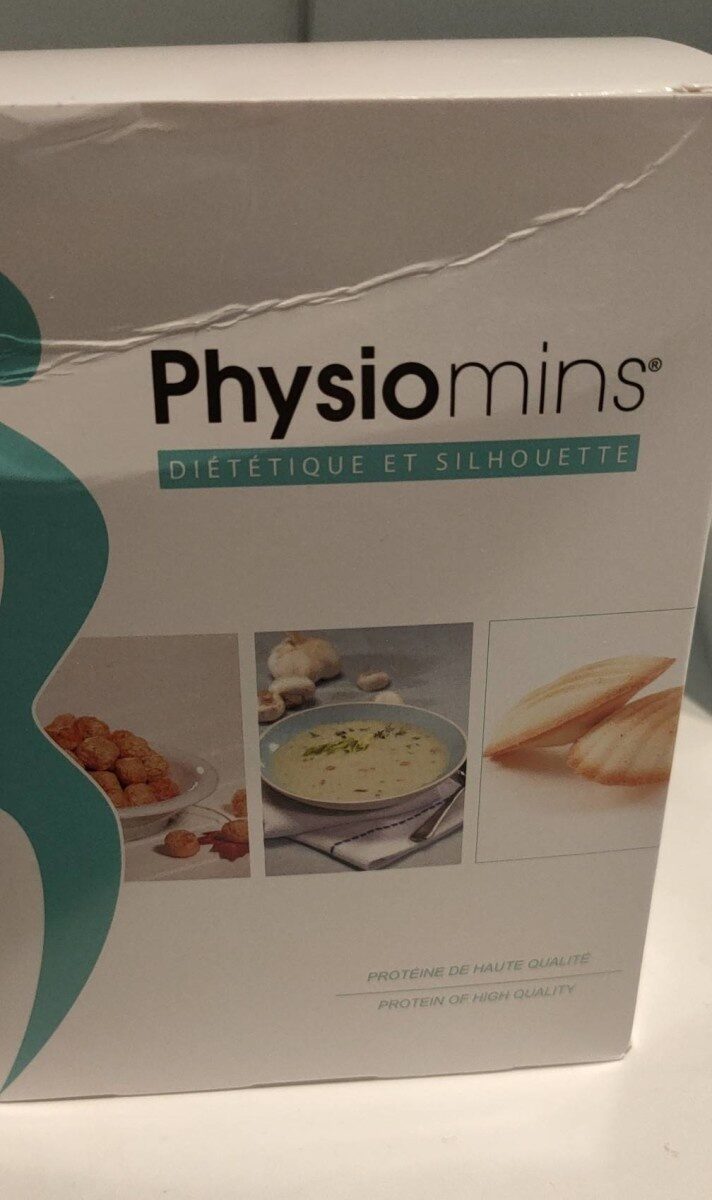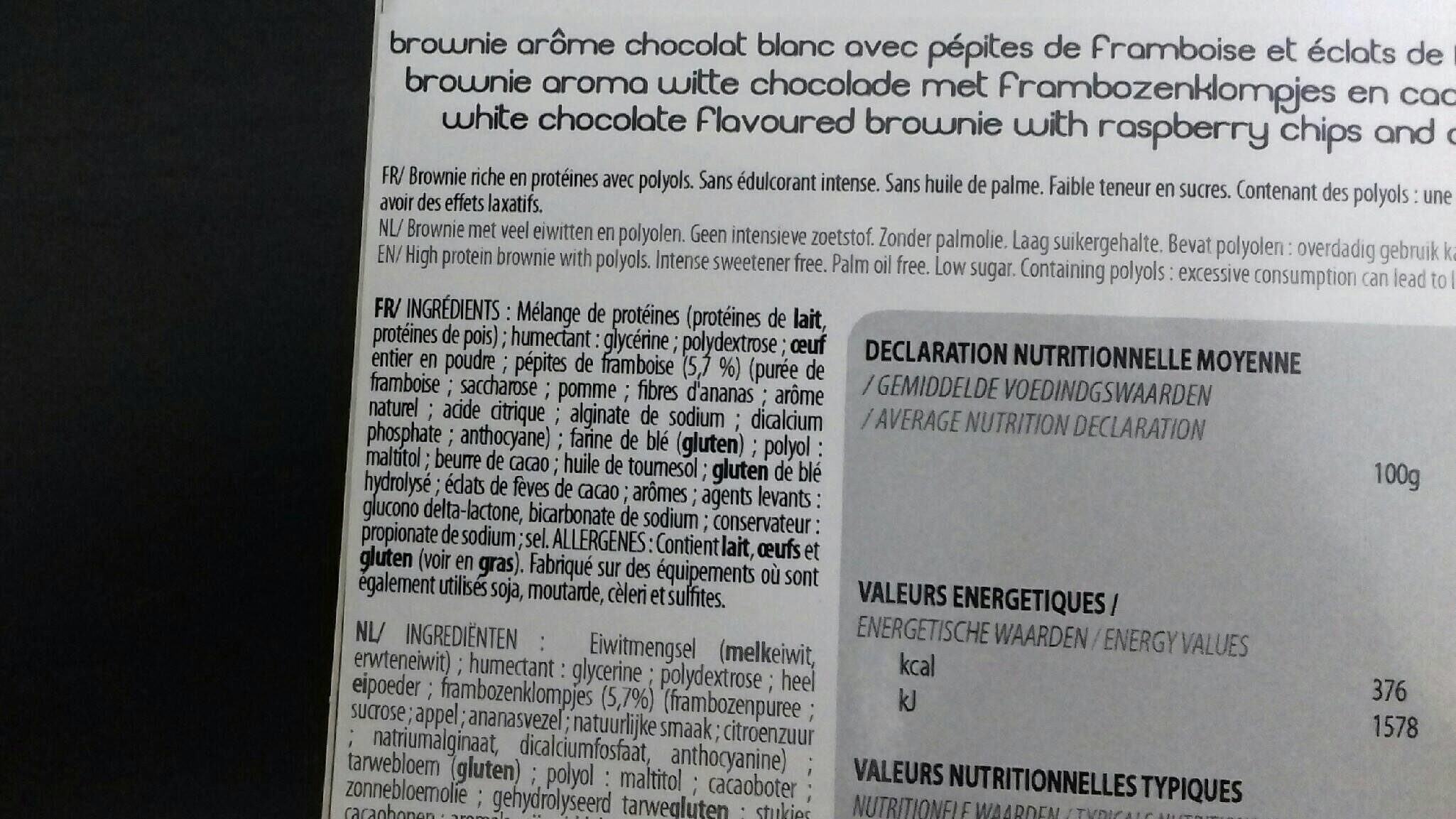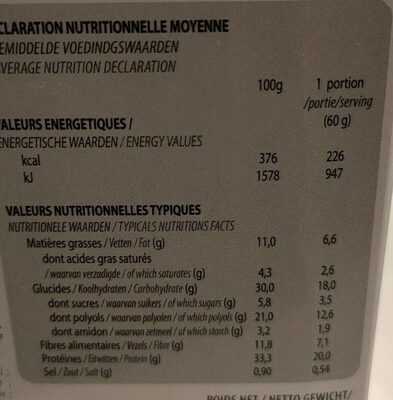Help us make food transparency the norm!
As a non-profit organization, we depend on your donations to continue informing consumers around the world about what they eat.
The food revolution starts with you!
Brownies chocolat blanc avec pépites de framboises -
Brownies chocolat blanc avec pépites de framboises -
This product page is not complete. You can help to complete it by editing it and adding more data from the photos we have, or by taking more photos using the app for Android or iPhone/iPad. Thank you!
×
Barcode: 3760215892469 (EAN / EAN-13)
Categories: Specific products, Products for specific diets
Labels, certifications, awards: No palm oil
Countries where sold: France
Matching with your preferences
Health
Ingredients
-
36 ingredients
: Mélange de protéines (protéines de lait, protéines de pois); humectant: glycérine; polydextrose; ceuf entier en poudre; pépites de framboise (5,7 %) (purée de framboise; saccharose; pomme ; fibres d'ananas; arôme naturel; acide citrique; alginate de sodium ; dicalcium phosphate; anthocyane); farine de blé (gluten); polyol : maltitol; beurre de cacao; huile de toumesol; gluten de blé hydrolysé; éclats de feves de cacao; arômes; agents levants : glucono delta-lactone, bicarbonate de sodium; conservateur : propionate de sodium; sel. ALLERGENES: Contient lait, ŒUFS et gluten (voir en gras). Fabriqué sur des équipements où sont également utilisés soja, moutarde, cèleri et sulfites.Allergens: Celery, Eggs, Gluten, Milk, Mustard, Sulphur dioxide and sulphites
Food processing
-
Ultra processed foods
Elements that indicate the product is in the 4 - Ultra processed food and drink products group:
- Additive: E163 - Anthocyanins
- Additive: E401 - Sodium alginate
- Additive: E422 - Glycerol
- Additive: E965 - Maltitol
- Ingredient: Flavouring
- Ingredient: Humectant
- Ingredient: Milk proteins
Food products are classified into 4 groups according to their degree of processing:
- Unprocessed or minimally processed foods
- Processed culinary ingredients
- Processed foods
- Ultra processed foods
The determination of the group is based on the category of the product and on the ingredients it contains.
Additives
-
E1200 - Polydextrose
Polydextrose: Polydextrose is a synthetic polymer of glucose. It is a food ingredient classified as soluble fiber by the U.S. Food and Drug Administration -FDA- as well as Health Canada, as of April 2013. It is frequently used to increase the dietary fiber content of food, to replace sugar, and to reduce calories and fat content. It is a multi-purpose food ingredient synthesized from dextrose -glucose-, plus about 10 percent sorbitol and 1 percent citric acid. Its E number is E1200. The FDA approved it in 1981. It is 0.1 times as sweet as sugar.Source: Wikipedia
-
E163 - Anthocyanins
Anthocyanin: Anthocyanins -also anthocyans; from Greek: ἄνθος -anthos- "flower" and κυάνεος/κυανοῦς kyaneos/kyanous "dark blue"- are water-soluble vacuolar pigments that, depending on their pH, may appear red, purple, or blue. Food plants rich in anthocyanins include the blueberry, raspberry, black rice, and black soybean, among many others that are red, blue, purple, or black. Some of the colors of autumn leaves are derived from anthocyanins.Anthocyanins belong to a parent class of molecules called flavonoids synthesized via the phenylpropanoid pathway. They occur in all tissues of higher plants, including leaves, stems, roots, flowers, and fruits. Anthocyanins are derived from anthocyanidins by adding sugars. They are odorless and moderately astringent. Although approved to color foods and beverages in the European Union, anthocyanins are not approved for use as a food additive because they have not been verified as safe when used as food or supplement ingredients. There is no conclusive evidence anthocyanins have any effect on human biology or diseases.Source: Wikipedia
-
E281 - Sodium propionate
Sodium propionate: Sodium propanoate or sodium propionate is the sodium salt of propionic acid which has the chemical formula Na-C2H5COO-. This white crystalline solid is deliquescent in moist air.Source: Wikipedia
-
E330 - Citric acid
Citric acid is a natural organic acid found in citrus fruits such as lemons, oranges, and limes.
It is widely used in the food industry as a flavor enhancer, acidulant, and preservative due to its tart and refreshing taste.
Citric acid is safe for consumption when used in moderation and is considered a generally recognized as safe (GRAS) food additive by regulatory agencies worldwide.
-
E341 - Calcium phosphates
Calcium phosphate: Calcium phosphate is a family of materials and minerals containing calcium ions -Ca2+- together with inorganic phosphate anions. Some so-called calcium phosphates contain oxide and hydroxide as well. They are white solids of nutritious value.Source: Wikipedia
-
E341ii - Dicalcium phosphate
Calcium phosphate: Calcium phosphate is a family of materials and minerals containing calcium ions -Ca2+- together with inorganic phosphate anions. Some so-called calcium phosphates contain oxide and hydroxide as well. They are white solids of nutritious value.Source: Wikipedia
-
E422 - Glycerol
Glycerol: Glycerol -; also called glycerine or glycerin; see spelling differences- is a simple polyol compound. It is a colorless, odorless, viscous liquid that is sweet-tasting and non-toxic. The glycerol backbone is found in all lipids known as triglycerides. It is widely used in the food industry as a sweetener and humectant and in pharmaceutical formulations. Glycerol has three hydroxyl groups that are responsible for its solubility in water and its hygroscopic nature.Source: Wikipedia
-
E500 - Sodium carbonates
Sodium carbonates (E500) are compounds commonly used in food preparation as leavening agents, helping baked goods rise by releasing carbon dioxide when they interact with acids.
Often found in baking soda, they regulate the pH of food, preventing it from becoming too acidic or too alkaline. In the culinary world, sodium carbonates can also enhance the texture and structure of foods, such as noodles, by modifying the gluten network.
Generally recognized as safe, sodium carbonates are non-toxic when consumed in typical amounts found in food.
-
E500ii - Sodium hydrogen carbonate
Sodium hydrogen carbonate, also known as E500ii, is a food additive commonly used as a leavening agent.
When added to recipes, it releases carbon dioxide gas upon exposure to heat or acids, causing dough to rise and resulting in a light, fluffy texture in baked goods.
It is generally recognized as safe (GRAS) by regulatory authorities when used in appropriate quantities and poses no significant health risks when consumed in typical food applications.
-
E575 - Glucono-delta-lactone
Glucono delta-lactone: Glucono delta-lactone -GDL-, also known as gluconolactone, is a food additive with the E number E575 used as a sequestrant, an acidifier, or a curing, pickling, or leavening agent. It is a lactone of D-gluconic acid. Pure GDL is a white odorless crystalline powder. GDL has been marketed for use in feta cheese. GDL is neutral, but hydrolyses in water to gluconic acid which is acidic, adding a tangy taste to foods, though it has roughly a third of the sourness of citric acid. It is metabolized to 6-phospho-D-gluconate; one gram of GDL yields roughly the same amount of metabolic energy as one gram of sugar. Upon addition to water, GDL is partially hydrolysed to gluconic acid, with the balance between the lactone form and the acid form established as a chemical equilibrium. The rate of hydrolysis of GDL is increased by heat and high pH.The yeast Saccharomyces bulderi can be used to ferment gluconolactone to ethanol and carbon dioxide. The pH value greatly affects culture growth. Gluconolactone at 1 or 2% in a mineral media solution causes the pH to drop below 3.It is also a complete inhibitor of the enzyme amygdalin beta-glucosidase at concentrations of 1 mM.Source: Wikipedia
-
E965 - Maltitol
Maltitol: Maltitol is a sugar alcohol -a polyol- used as a sugar substitute. It has 75–90% of the sweetness of sucrose -table sugar- and nearly identical properties, except for browning. It is used to replace table sugar because it is half as caloric, does not promote tooth decay, and has a somewhat lesser effect on blood glucose. In chemical terms, maltitol is known as 4-O-α-glucopyranosyl-D-sorbitol. It is used in commercial products under trade names such as Lesys, Maltisweet and SweetPearl.Source: Wikipedia
Ingredients analysis
-
Palm oil content unknown
Unrecognized ingredients: fr:ceuf-entier-en-poudre, fr:pepites-de-framboise, fr:dicalcium-phosphate, fr:polyol, fr:huile-de-toumesol, fr:gluten-de-ble-hydrolyse, fr:voir-en-gras, fr:fabrique-sur-des-equipements-ou-sont-egalement-utilises-sojaSome ingredients could not be recognized.
We need your help!
You can help us recognize more ingredients and better analyze the list of ingredients for this product and others:
- Edit this product page to correct spelling mistakes in the ingredients list, and/or to remove ingredients in other languages and sentences that are not related to the ingredients.
- Add new entries, synonyms or translations to our multilingual lists of ingredients, ingredient processing methods, and labels.
If you would like to help, join the #ingredients channel on our Slack discussion space and/or learn about ingredients analysis on our wiki. Thank you!
-
Non-vegan
Non-vegan ingredients: Milk proteinsSome ingredients could not be recognized.
We need your help!
You can help us recognize more ingredients and better analyze the list of ingredients for this product and others:
- Edit this product page to correct spelling mistakes in the ingredients list, and/or to remove ingredients in other languages and sentences that are not related to the ingredients.
- Add new entries, synonyms or translations to our multilingual lists of ingredients, ingredient processing methods, and labels.
If you would like to help, join the #ingredients channel on our Slack discussion space and/or learn about ingredients analysis on our wiki. Thank you!
-
Vegetarian status unknown
Unrecognized ingredients: Proteins mix, fr:ceuf-entier-en-poudre, fr:pepites-de-framboise, fr:dicalcium-phosphate, fr:polyol, fr:huile-de-toumesol, fr:gluten-de-ble-hydrolyse, fr:voir-en-gras, fr:fabrique-sur-des-equipements-ou-sont-egalement-utilises-soja, Mustard, SulfiteSome ingredients could not be recognized.
We need your help!
You can help us recognize more ingredients and better analyze the list of ingredients for this product and others:
- Edit this product page to correct spelling mistakes in the ingredients list, and/or to remove ingredients in other languages and sentences that are not related to the ingredients.
- Add new entries, synonyms or translations to our multilingual lists of ingredients, ingredient processing methods, and labels.
If you would like to help, join the #ingredients channel on our Slack discussion space and/or learn about ingredients analysis on our wiki. Thank you!
-
Details of the analysis of the ingredients
We need your help!
Some ingredients could not be recognized.
We need your help!
You can help us recognize more ingredients and better analyze the list of ingredients for this product and others:
- Edit this product page to correct spelling mistakes in the ingredients list, and/or to remove ingredients in other languages and sentences that are not related to the ingredients.
- Add new entries, synonyms or translations to our multilingual lists of ingredients, ingredient processing methods, and labels.
If you would like to help, join the #ingredients channel on our Slack discussion space and/or learn about ingredients analysis on our wiki. Thank you!
: Mélange de protéines (protéines de lait, protéines de pois), humectant (glycérine), polydextrose, ceuf entier en poudre, pépites de framboise 5.7% (purée de framboise, saccharose, pomme, fibres d'ananas, arôme naturel, acide citrique, alginate de sodium, dicalcium phosphate, anthocyane), farine de blé, polyol (maltitol), beurre de cacao, huile de toumesol, gluten de blé hydrolysé, éclats de feves de cacao, arômes, agents levants (glucono delta-lactone), bicarbonate de sodium, conservateur (propionate de sodium), sel (voir en gras), Fabriqué sur des équipements où sont également utilisés soja, moutarde, cèleri, sulfites- Mélange de protéines -> en:proteins-mix - percent_min: 5.7 - percent_max: 77.2
- protéines de lait -> en:milk-proteins - vegan: no - vegetarian: yes - percent_min: 2.85 - percent_max: 77.2
- protéines de pois -> en:pea-protein - vegan: yes - vegetarian: yes - percent_min: 0 - percent_max: 38.6
- humectant -> en:humectant - percent_min: 5.7 - percent_max: 41.45
- glycérine -> en:e422 - vegan: maybe - vegetarian: maybe - percent_min: 5.7 - percent_max: 41.45
- polydextrose -> en:e1200 - vegan: yes - vegetarian: yes - percent_min: 5.7 - percent_max: 29.5333333333333
- ceuf entier en poudre -> fr:ceuf-entier-en-poudre - percent_min: 5.7 - percent_max: 23.575
- pépites de framboise -> fr:pepites-de-framboise - percent_min: 5.7 - percent: 5.7 - percent_max: 5.7
- purée de framboise -> en:raspberry-puree - vegan: maybe - vegetarian: maybe - ciqual_food_code: 13015 - percent_min: 0.633333333333333 - percent_max: 5.7
- saccharose -> en:sucrose - vegan: yes - vegetarian: yes - ciqual_proxy_food_code: 31016 - percent_min: 0 - percent_max: 2.85
- pomme -> en:apple - vegan: yes - vegetarian: yes - ciqual_food_code: 13050 - percent_min: 0 - percent_max: 1.9
- fibres d'ananas -> en:pineapple-fibre - vegan: yes - vegetarian: yes - percent_min: 0 - percent_max: 1.425
- arôme naturel -> en:natural-flavouring - vegan: maybe - vegetarian: maybe - percent_min: 0 - percent_max: 1.14
- acide citrique -> en:e330 - vegan: yes - vegetarian: yes - percent_min: 0 - percent_max: 0.95
- alginate de sodium -> en:e401 - vegan: yes - vegetarian: yes - percent_min: 0 - percent_max: 0.814285714285714
- dicalcium phosphate -> fr:dicalcium-phosphate - percent_min: 0 - percent_max: 0.7125
- anthocyane -> en:e163 - vegan: yes - vegetarian: yes - percent_min: 0 - percent_max: 0.7125
- farine de blé -> en:wheat-flour - vegan: yes - vegetarian: yes - ciqual_proxy_food_code: 9410 - percent_min: 0 - percent_max: 5.7
- polyol -> fr:polyol - percent_min: 0 - percent_max: 5.7
- maltitol -> en:e965 - vegan: yes - vegetarian: yes - percent_min: 0 - percent_max: 5.7
- beurre de cacao -> en:cocoa-butter - vegan: yes - vegetarian: yes - ciqual_food_code: 16030 - percent_min: 0 - percent_max: 5.7
- huile de toumesol -> fr:huile-de-toumesol - percent_min: 0 - percent_max: 5.7
- gluten de blé hydrolysé -> fr:gluten-de-ble-hydrolyse - percent_min: 0 - percent_max: 5.7
- éclats de feves de cacao -> en:cocoa-nibs - vegan: yes - vegetarian: yes - ciqual_proxy_food_code: 18100 - percent_min: 0 - percent_max: 5.7
- arômes -> en:flavouring - vegan: maybe - vegetarian: maybe - percent_min: 0 - percent_max: 5
- agents levants -> en:raising-agent - percent_min: 0 - percent_max: 5
- glucono delta-lactone -> en:e575 - vegan: yes - vegetarian: yes - percent_min: 0 - percent_max: 5
- bicarbonate de sodium -> en:e500ii - vegan: yes - vegetarian: yes - percent_min: 0 - percent_max: 5
- conservateur -> en:preservative - percent_min: 0 - percent_max: 5
- propionate de sodium -> en:e281 - vegan: yes - vegetarian: yes - percent_min: 0 - percent_max: 5
- sel -> en:salt - vegan: yes - vegetarian: yes - ciqual_food_code: 11058 - percent_min: 0 - percent_max: 0
- voir en gras -> fr:voir-en-gras - percent_min: 0 - percent_max: 0
- Fabriqué sur des équipements où sont également utilisés soja -> fr:fabrique-sur-des-equipements-ou-sont-egalement-utilises-soja - percent_min: 0 - percent_max: 0
- moutarde -> en:mustard - ciqual_food_code: 11013 - percent_min: 0 - percent_max: 0
- cèleri -> en:celery - vegan: yes - vegetarian: yes - ciqual_proxy_food_code: 20055 - percent_min: 0 - percent_max: 0
- sulfites -> en:sulfite - percent_min: 0 - percent_max: 0
Nutrition
-
Very good nutritional quality
⚠ ️Warning: the amount of fruits, vegetables and nuts is not specified on the label, it was estimated from the list of ingredients: 3This product is not considered a beverage for the calculation of the Nutri-Score.
Positive points: 10
- Proteins: 5 / 5 (value: 33.3, rounded value: 33.3)
- Fiber: 5 / 5 (value: 11.8, rounded value: 11.8)
- Fruits, vegetables, nuts, and colza/walnut/olive oils: 0 / 5 (value: 3.8, rounded value: 3.8)
Negative points: 9
- Energy: 4 / 10 (value: 1573, rounded value: 1573)
- Sugars: 1 / 10 (value: 5.8, rounded value: 5.8)
- Saturated fat: 4 / 10 (value: 4.3, rounded value: 4.3)
- Sodium: 0 / 10 (value: 0, rounded value: 0)
The points for proteins are counted because the negative points are less than 11.
Nutritional score: (9 - 10)
Nutri-Score:
-
Nutrient levels
-
Fat in moderate quantity (11%)
What you need to know- A high consumption of fat, especially saturated fats, can raise cholesterol, which increases the risk of heart diseases.
Recommendation: Limit the consumption of fat and saturated fat- Choose products with lower fat and saturated fat content.
-
Saturated fat in moderate quantity (4.3%)
What you need to know- A high consumption of fat, especially saturated fats, can raise cholesterol, which increases the risk of heart diseases.
Recommendation: Limit the consumption of fat and saturated fat- Choose products with lower fat and saturated fat content.
-
Sugars in moderate quantity (5.8%)
What you need to know- A high consumption of sugar can cause weight gain and tooth decay. It also augments the risk of type 2 diabetes and cardio-vascular diseases.
Recommendation: Limit the consumption of sugar and sugary drinks- Sugary drinks (such as sodas, fruit beverages, and fruit juices and nectars) should be limited as much as possible (no more than 1 glass a day).
- Choose products with lower sugar content and reduce the consumption of products with added sugars.
-
Salt in low quantity (0%)
What you need to know- A high consumption of salt (or sodium) can cause raised blood pressure, which can increase the risk of heart disease and stroke.
- Many people who have high blood pressure do not know it, as there are often no symptoms.
- Most people consume too much salt (on average 9 to 12 grams per day), around twice the recommended maximum level of intake.
Recommendation: Limit the consumption of salt and salted food- Reduce the quantity of salt used when cooking, and don't salt again at the table.
- Limit the consumption of salty snacks and choose products with lower salt content.
-
-
Nutrition facts
Nutrition facts As sold
for 100 g / 100 mlCompared to: Products for specific diets Energy 1,573 kj
(376 kcal)+26% Fat 11 g +53% Saturated fat 4.3 g +108% Carbohydrates 30 g -28% Sugars 5.8 g +13% Fiber 11.8 g +203% Proteins 33.3 g +220% Salt 0 g -100% Fruits‚ vegetables‚ nuts and rapeseed‚ walnut and olive oils (estimate from ingredients list analysis) 3.8 %
Environment
-
Eco-Score not computed - Unknown environmental impact
We could not compute the Eco-Score of this product as it is missing some data, could you help complete it?Could you add a precise product category so that we can compute the Eco-Score? Add a category
Packaging
-
Missing packaging information for this product
⚠ ️ The information about the packaging of this product is not filled in.Take a photo of the recycling information Take a photo of the recycling information
Transportation
-
Origins of ingredients
Missing origins of ingredients information
⚠ ️ The origins of the ingredients of this product are not indicated.
If they are indicated on the packaging, you can modify the product sheet and add them.
If you are the manufacturer of this product, you can send us the information with our free platform for producers.Add the origins of ingredients for this product Add the origins of ingredients for this product
Report a problem
-
Incomplete or incorrect information?
Category, labels, ingredients, allergens, nutritional information, photos etc.
If the information does not match the information on the packaging, please complete or correct it. Open Food Facts is a collaborative database, and every contribution is useful for all.
Data sources
Product added on by kiliweb
Last edit of product page on by gmlaa.
Product page also edited by openfoodfacts-contributors, roboto-app, teolemon, yuka.V0prckg0RWJwZU00d2ZFVDUwTEwxZTVwNThXVVltZVRGOVk3SVE9PQ, yuka.sY2b0xO6T85zoF3NwEKvlhwXDdj_qTDuaibTomy55_ijF8faaPd7_pajCas.










